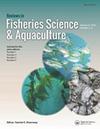An Evaluation of Environmental Changes Within Fisheries Involved in the Marine Stewardship Council Certification Scheme
引用次数: 66
Abstract
There is ongoing debate regarding the value of market-based instruments, such as certification schemes, as an approach to improving the environmental impact of fisheries. This article evaluates the effects of the Marine Stewardship Council on the environmental performance of fisheries over the period before and after certification. A large number of fisheries (n = 447) have undertaken pre-assessments, and in most cases (83%), the auditors recommended that significant improvements should be made before entering full assessment. In cases where substantial improvements were required, the proportion of performance indicators scoring over 80 (considered by the Marine Stewardship Council to be the point of best practice) increased by 22% between pre-assessment and certification. Significant improvements continued after certification, characterized by a 16% increase in the proportion of performance indicators scoring over 80 over a period of five years. Increases in scores assigned by auditors were significantly correlated with increases in real environmental performance (such as increases in stock biomass or the development of protected areas) and improvements in information, which led to increasing certainty that impacts were within sustainable limits. Although results show that certification is associated with real environmental benefits, most improvements are made by fisheries that require significant changes to enter the program. [Supplementary materials are available for this article. Go to the publisher's online edition of Reviews in Fisheries Science for the following free supplemental resources: information and references used in order to analyze the trends related to each fishery performance indicator]参与海洋管理委员会核证计划渔业的环境变化评估
关于以市场为基础的文书,例如核证制度,作为改善渔业对环境影响的一种方法的价值,目前正在进行辩论。本文评估了海洋管理委员会在认证前后对渔业环境绩效的影响。许多渔场(n = 447)进行了预评估,在大多数情况下(83%),审计员建议在进行全面评估之前进行重大改进。在需要进行重大改进的情况下,绩效指标得分超过80分(由海洋管理委员会认为是最佳做法点)的比例在预评估和认证之间增加了22%。认证后仍有显著改善,其特点是在五年内,绩效指标得分超过80分的比例增加了16%。审核员分配的分数的增加与实际环境绩效的增加(如存量生物量的增加或保护区的开发)和信息的改进显著相关,这导致影响在可持续限度内的确定性增加。虽然结果表明认证与真正的环境效益有关,但大多数改善是由需要进行重大改变才能进入该计划的渔业实现的。这篇文章有补充材料。请访问出版商的《渔业科学评论》网络版,获取以下免费补充资源:用于分析与每个渔业绩效指标相关的趋势的信息和参考文献]
本文章由计算机程序翻译,如有差异,请以英文原文为准。
求助全文
约1分钟内获得全文
求助全文

 求助内容:
求助内容: 应助结果提醒方式:
应助结果提醒方式:


